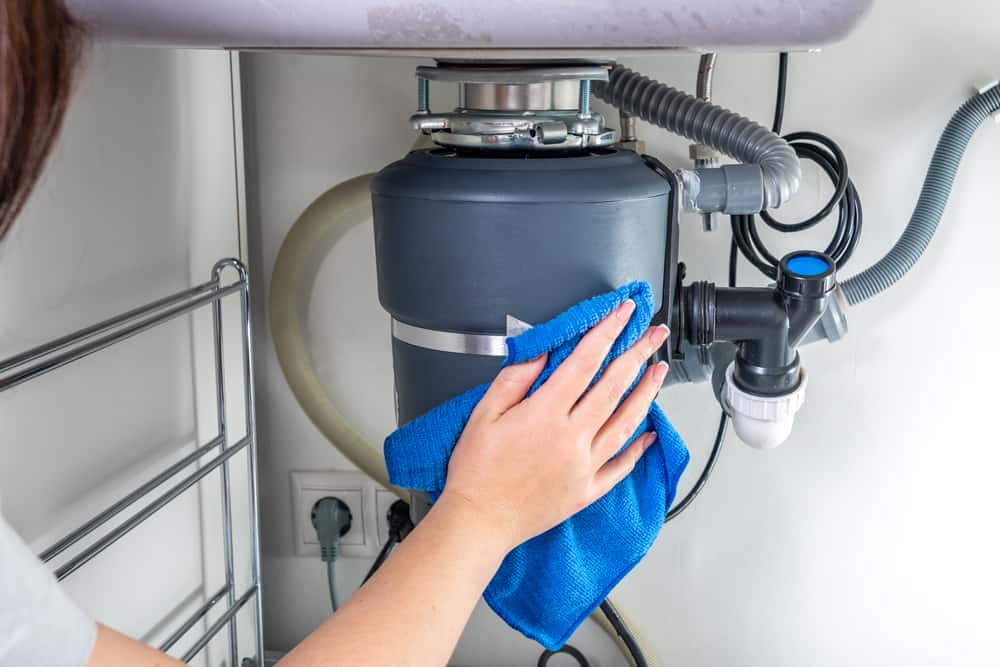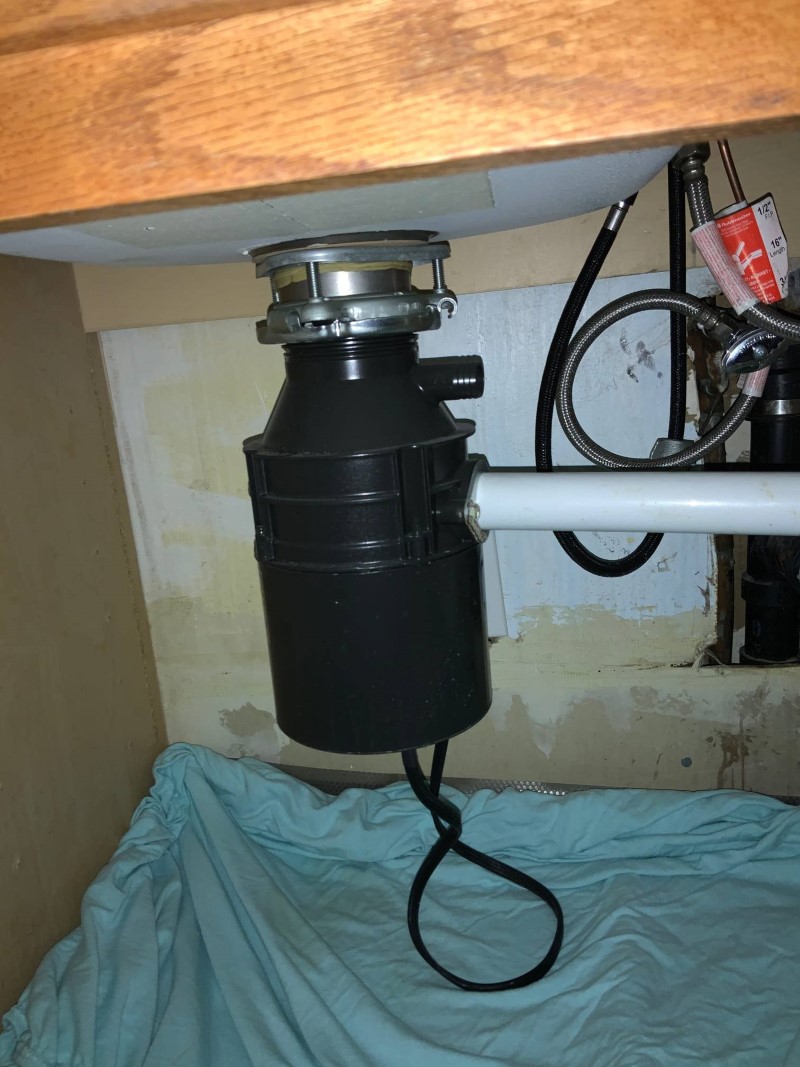Just how do you really feel in relation to Why Is ?

Waste disposal unit are essential kitchen area appliances that help in dealing with food waste successfully. However, a dripping waste disposal unit can be a frustrating and unpleasant trouble to deal with. Thankfully, lots of leakages can be repaired quickly with a few straightforward steps. In this post, we will certainly go over how to fix a dripping garbage disposal efficiently.
Intro
Waste disposal unit are installed under cooking area sinks and are made to shred food waste right into smaller items, allowing it to travel through the pipes system easily. While these gadgets are typically dependable, leakages can occur over time due to wear and tear, loosened connections, or damage to the unit.
Common Causes of Leaks in Garbage Disposals
Worn Seals and Gaskets
Seals and gaskets play a critical duty in protecting against water from leaking out of the waste disposal unit. In time, these elements can deteriorate, bring about leakages around the disposal device.
Loose Links
The connections between the waste disposal unit and the pipes system can become loosened with time, causing water to leak out during procedure.
Splits or Holes in the Disposal Device
Physical damage to the garbage disposal, such as cracks or openings in the real estate, can also lead to leaks.
Determining the Source of the Leakage
Before attempting to take care of a leaking waste disposal unit, it is important to determine the resource of the leakage. This can commonly be done with aesthetic assessment or by conducting basic examinations.
Visual Examination
Evaluate the garbage disposal device carefully for any kind of indicators of water leak. Pay attention to areas around seals, gaskets, and connection factors.
Checking for Leaks
One means to check for leakages is by running water through the disposal device and checking for any visible indications of leakage.
Devices and Products Needed for Taking Care Of a Leaking Waste Disposal Unit
Before starting the repair work process, gather the necessary tools and materials, including a screwdriver, adjustable wrench, plumbing technician's putty, replacement seals or gaskets, and epoxy or patching material for repairing cracks or holes.
Step-by-Step Guide to Dealing With a Dripping Waste Disposal Unit
Switch off the Power
Before attempting any type of repair services, ensure that the power to the garbage disposal device is turned off to prevent the risk of electric shock.
Locate the Leak
Identify the specific location of the leakage and figure out the reason.
Tighten Connections
Use a wrench to tighten up any kind of loose connections in between check here the disposal device and the pipes system.
Change Seals or Gaskets
If the leak is because of used seals or gaskets, remove the old parts and replace them with brand-new ones.
Patching Fractures or Openings
For cracks or openings in the disposal system, use epoxy or a suitable patching material to secure the broken area.
Evaluating the Waste Disposal Unit After Repair Service
Once the fixing is complete, evaluate the waste disposal unit by running water via it to ensure that the leak has actually been dealt with.
Preventive Upkeep Tips to Avoid Future Leakages
To prevent future leakages, it is essential to carry out regular upkeep on your garbage disposal. This includes keeping it clean, avoiding putting non-food items or difficult items down the disposal, and periodically looking for leaks or other concerns.
Verdict
Finally, fixing a leaking garbage disposal is a fairly simple procedure that can be finished with standard tools and materials. By complying with the steps outlined in this post and practicing preventive maintenance, you can keep your garbage disposal in good working condition and prevent pricey repair work in the future.
What to Do About a Leaking Garbage Disposal
A leaking garbage disposal often goes unnoticed until you confront a sopping cabinet, a foul-smelling puddle, or an audible drip-drip-drip from the unit. The fix can be frustrating, too, because the leak can stem from a number of components in the system. Fortunately, with a little sleuthing, you can zero in on the leak and—depending on the exact location—stop the icky oozing and repair the component that caused it. Worst case scenario, if it turns out that the garbage disposal must be replaced, installing a new one is a reasonable do-it-yourself task for those with basic plumbing skills. Read on to keep the cash you’d otherwise hand over to a pro.
Prepare to find the leak
Prior to testing the garbage disposal for leaks, unplug it at the wall outlet and turn off the power from the breaker box to prevent electrical shock. Then insert a watertight sink stopper into your sink drain and wipe the unit dry with a clean cloth. In any handy container, mix a few drops of food coloring into a few cups of water, and pour the dyed water onto the sink stopper to help you locate the leak.
Investigate the source
the top, where the disposal meets the sink drain the side, where the dishwasher hose or main drain pipe connects to the disposal or the bottom of the unit Inspect each of these locations while gliding a light-colored rag over the unit; the dyed water will readily show on the rag and reveal the location of the leak. If a leak isn’t immediately apparent, remove the sink stopper and pour a few more cups of dyed water down the sink drain, then check for leaks again. Leaks near the top of the unit are more likely to show themselves while the sink is plugged, while side and bottom leaks are more noticeable while the sink is unplugged.
The metal sink flange that sits directly inside the sink drain is typically sealed around the top with plumber’s putty (a clay-like sealant) and then secured from under the sink with bolts. If the plumber’s putty deteriorates, or the bolts loosen, the flange can no longer form a watertight seal between the sink drain and the disposal—which could cause a leak at the top of the unit.
To reseal the leaky flange, you must first detach the garbage disposal. Start by loosening the screws securing the main drain pipe to the disposal, then loosen the screws in the metal clamp securing the dishwasher hose to the disposal and detach the drain pipe and dishwasher hose from the disposal. Loosen the screws in the mounting ring that connects the disposal to the metal mounting assembly beneath the sink, then pull down the disposal and carefully set it on a clean, dry surface. Loosen the bolts in the mounting assembly with a wrench, then pull down the mounting assembly and set it near the disposal.

As a fervent person who reads about Garbage Disposal Leaking From Bottom, I figured sharing that excerpt was a smart idea. Enjoyed reading our article? Please share it. Let somebody else locate it. Thanks for taking the time to read it.
Click Here